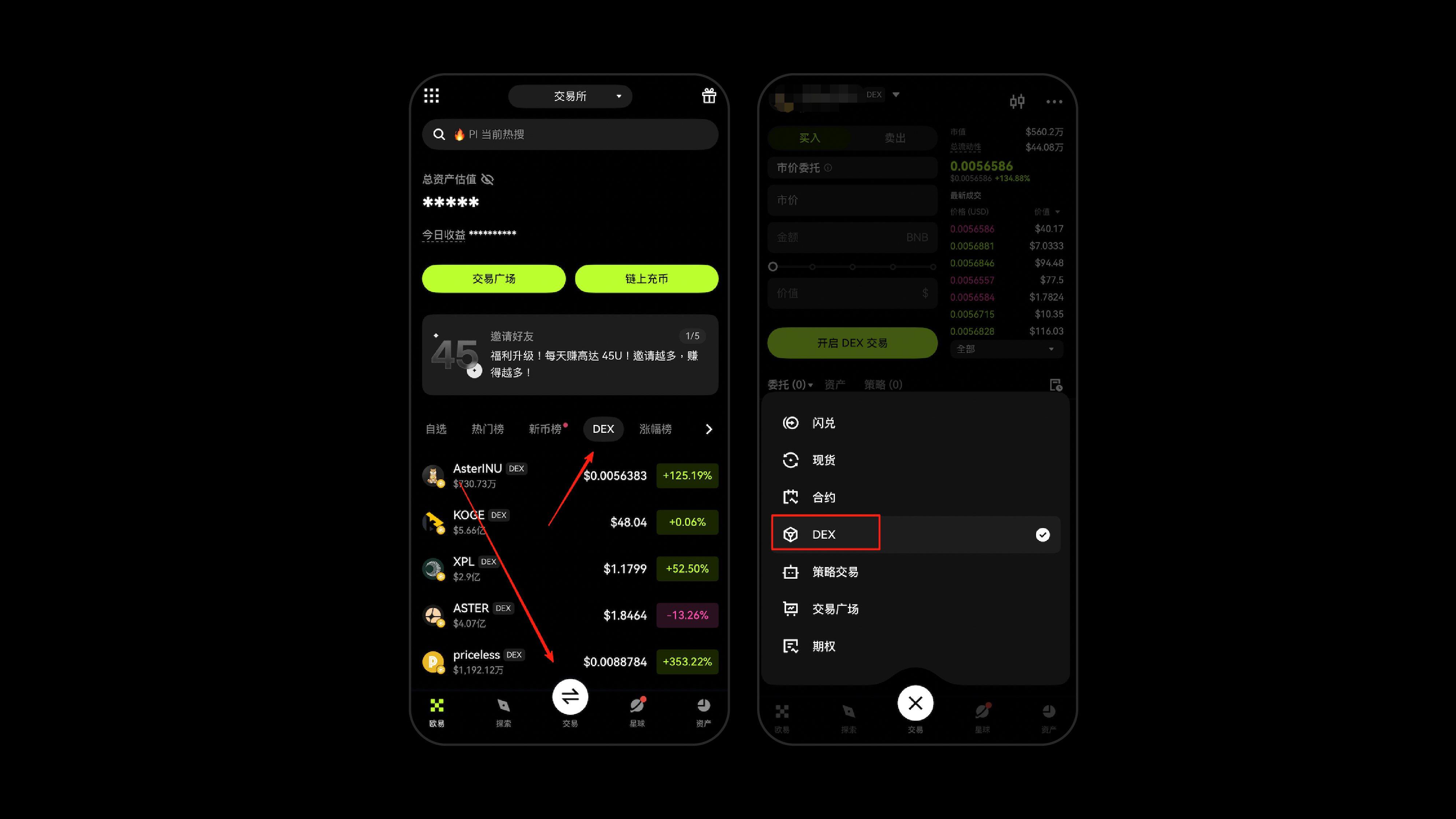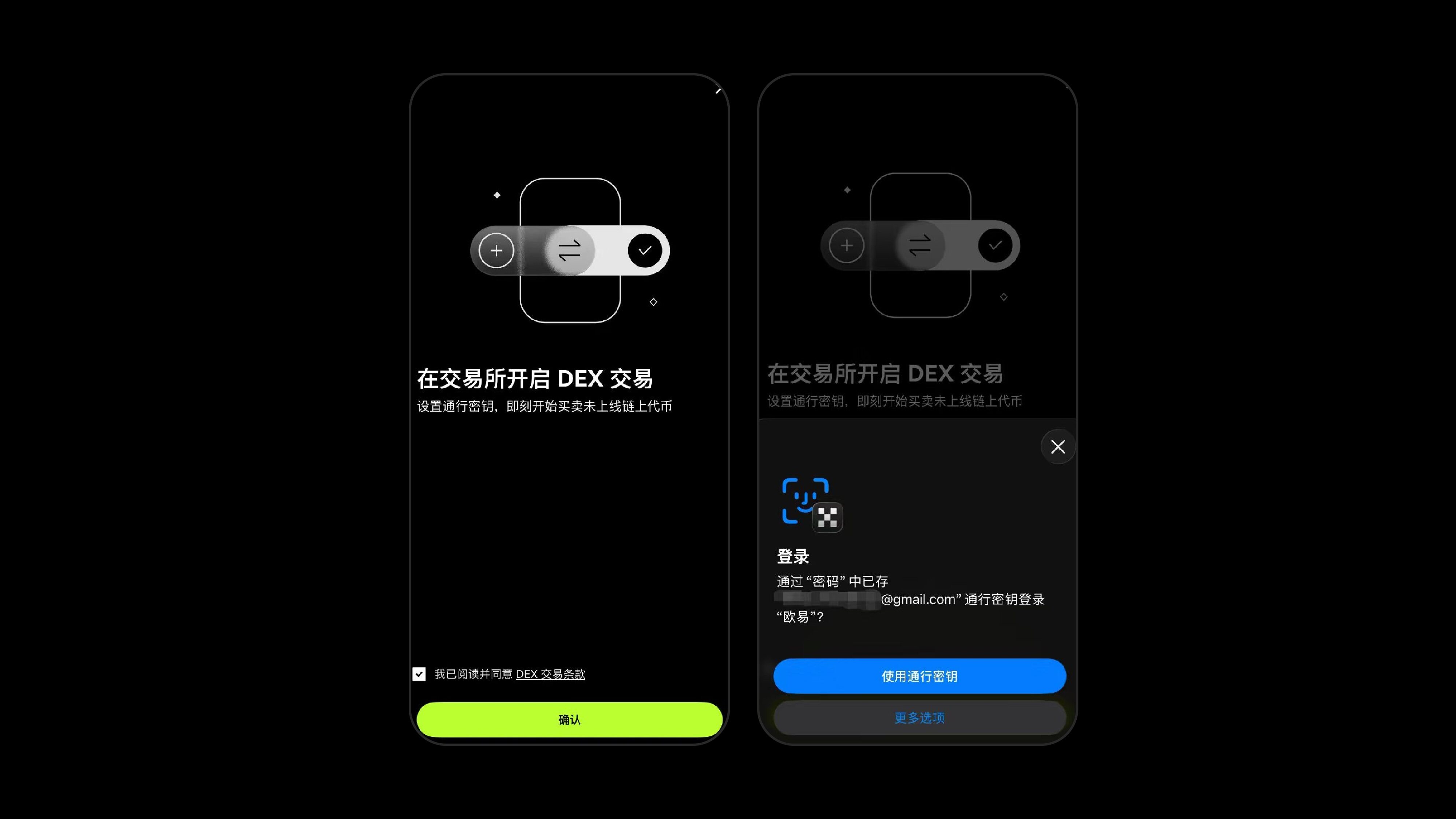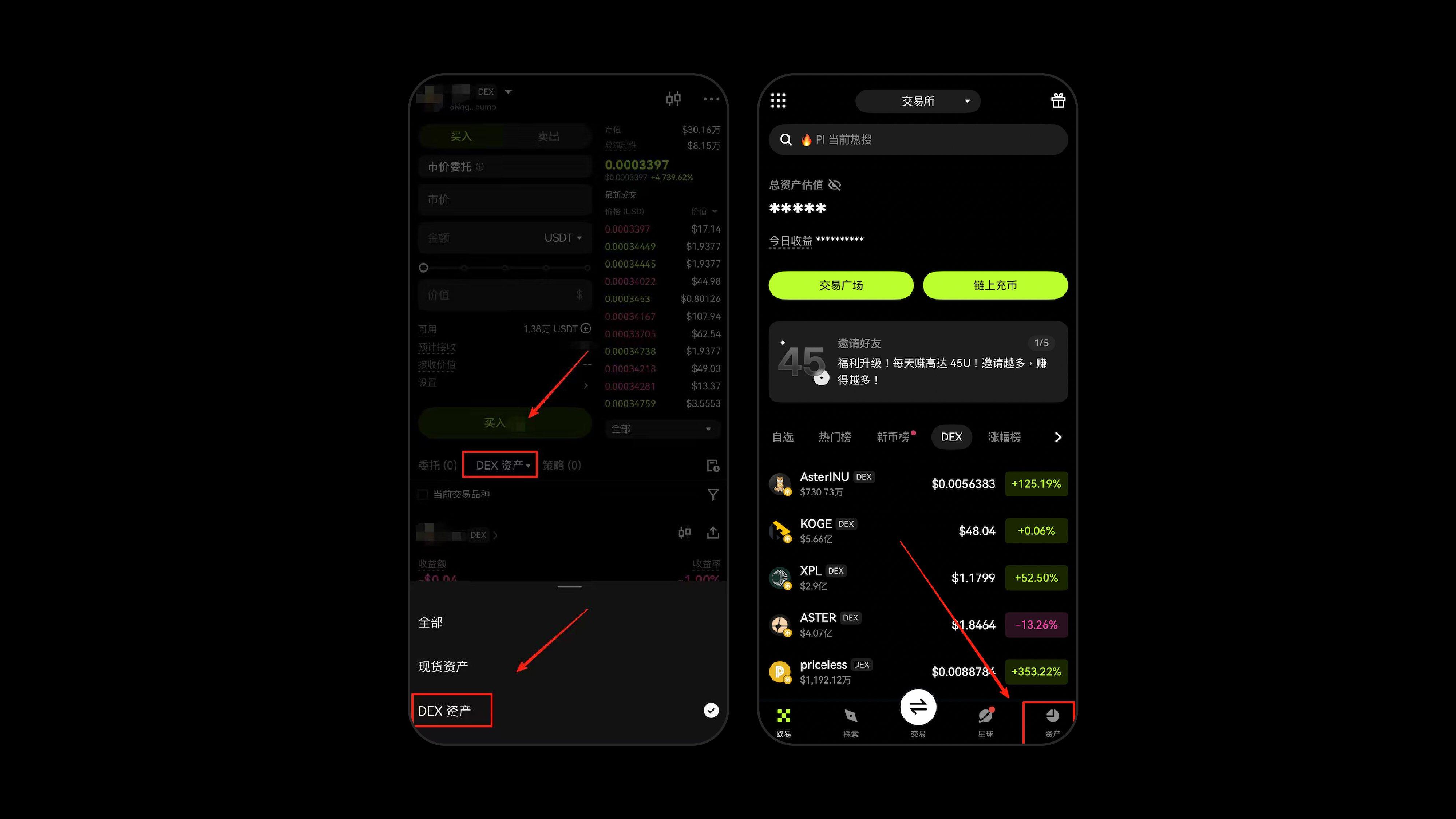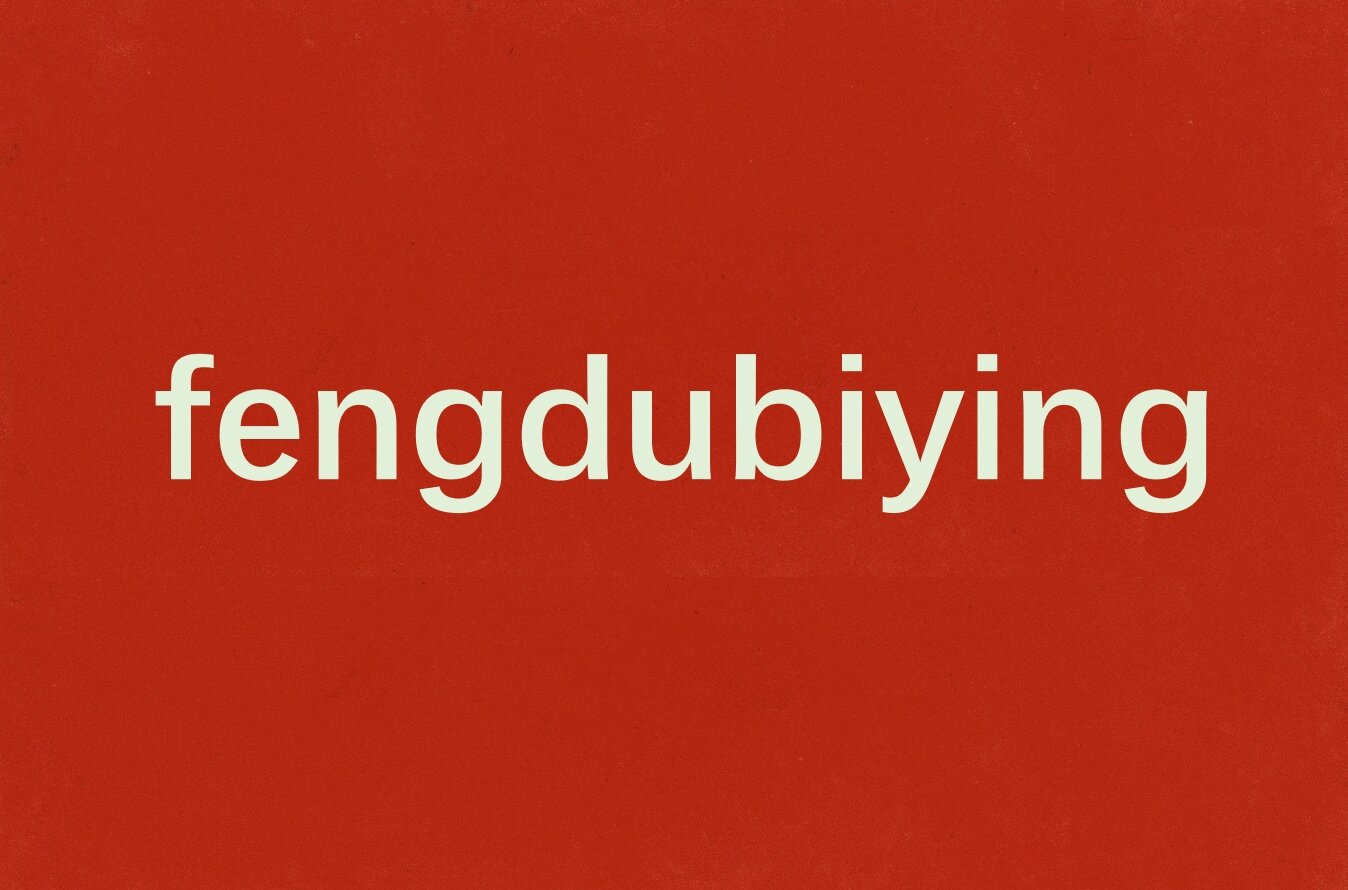OKX exchange launched an "in-house DEX," but what exactly did it do?
"Either be a domesticated pig, safe but boring; or be a wild wolf, free but always at risk of being shot by a hunter."
Crypto enthusiasts have been facing this choice for years. In this extreme world, users are often divided into two camps. One camp consists of users of centralized exchanges, who enjoy a smooth trading experience, mature risk control systems, and stable liquidity, but at the cost of limited choices—they can only play with whatever the platform offers, and more importantly, they ultimately do not have control over their assets.
Another group consists of explorers of decentralized exchanges, who embrace the infinite possibilities on-chain, where the earliest new assets appear, the wildest returns, and the highest degree of freedom are available. But the other side of freedom is the cumbersome cross-chain process, expensive gas fees, heavy private key management, and the risk of having your wallet emptied by hackers.
For a long time, this has been the "binary dilemma" of the crypto world—a tug-of-war between security and freedom. But now, it seems someone wants to overturn the table. OKX has officially launched a DEX built into its exchange, and this is not just another gimmick of a centralized platform integrating a decentralized platform, but a genuine attempt to bridge the gap between the two ends and reconstruct the boundaries of players. Crucially, this product is currently completely gas-free, with OKX subsidizing users!
Built-in DEX in exchanges: becoming a "portal" to on-chain data.
So, what exactly does OKX's built-in DEX do? Simply put, OKX allows you to directly use your USDT, USDC, and other tokens in your account to buy any on-chain token currently supported by public chains like Solana, X Layer, and Base. The tokens you buy go into your own dedicated, self-custodied wallet, giving you complete control over your assets.
This sounds like "CEX integrated with DEX", or just bringing over the DEX aggregator from OKX Wallet? But it's actually not the same thing at all.
Previously, when using a DEX aggregator in the OKX wallet, you had to manage your mnemonic phrase, handle cross-chain transactions yourself, and bear the operational risks yourself. This newly launched exchange-integrated DEX, however, is essentially an on-chain entry point tailored for centralized users—you can open a wallet simply by scanning your face, without needing a mnemonic phrase; you can directly pay for gas with USDT/USDC, without having to exchange for native tokens like SOL. In other words, this isn't about "making you adapt to on-chain," but rather "making on-chain adapt to you."
Translate this to mean what?
You now have the CEX experience: no Web3 wallet registration required, no gas fees, and no cross-chain transactions. The entire trading process is as smooth as buying and selling BTC and ETH on a centralized exchange. Your USDT is your ultimate weapon. At the same time, you also have control over your assets. The assets are not held by OKX, but rather in an independent, self-custodied wallet generated for you by the system. OKX has once again put into practice its long-standing slogan – "Not your keys, not your coins."
From a user experience perspective, it's more like opening a "portal" within a centralized exchange (CEX). When you see potential in an on-chain token, you can simply place an order with one click, and the OKX DEX trading system will complete the transaction for you at a better price and faster speed, directly transferring the token to your self-custodied wallet. Furthermore, the system includes built-in token discovery, market intelligence, and asset tracking functions, allowing ordinary users to "easily understand on-chain transactions" for the first time.
After activating this feature, users can create a wallet in seconds, supporting Passkey and facial recognition, eliminating the need for mnemonic phrases, and exchanging potential cryptocurrencies with a single click. With its familiar operation, smooth user experience, and self-custodied assets, OKX aims to break down the "wall" separating CEXs and DEXs, allowing more people to truly enter the on-chain world.
OKX is attempting to break the industry's long-standing "impossible triangle": security, convenience, and opportunity—is it truly impossible to have all three? In a sense, OKX's answer is: "Yes." It is trying to play that long-lost role— the ferryman between the centralized and decentralized worlds.
Three types of "river crossers": Exchanges with built-in DEXs, meeting different needs in one stop.
OKX exchange's built-in DEX is attempting to "ferry" these different types of users.
The first category consists of Web3 novices or light users . They are full of curiosity about the on-chain world and have heard that "those who started using blockchain early have made a fortune," but when it comes to actually using it, they are often stopped at the door—the mnemonic phrases are complicated and difficult to remember, gas fees are opaque, cross-chain operations are cumbersome, and they have to manage their own wallets. Most of these users have trading experience on centralized exchanges, but rarely actually use blockchain. Occasionally, they buy inscriptions, NFTs, or Dogecoins because of trending topics, but after all the trouble, they return to their familiar exchanges.
OKX exchange's built-in DEX provides them with a brand-new solution: within the familiar trading interface, they can directly purchase on-chain tokens such as Solana, X Layer, and Base using USDT or USDC, without needing mnemonic phrases, gas exchange fees, or leaving the exchange. Previously, to chase popular coins, they had to trade on second-tier exchanges, manually cross-chain on DEXs, and pray for successful trades; now, with a single click, on-chain tokens are instantly available, and USDT continues to earn interest in their trading accounts. For them, this is not just a new product, but more like a ticket to easily enter the on-chain world.
The second category is cautious high-net-worth users . They may have experienced on-chain theft or witnessed cases of mnemonic phrase leaks or wallet hacks, leaving them wary. While they also want to participate in on-chain opportunities, security remains their top priority. They would rather keep their funds on exchanges than guard their private keys alone.
OKX's built-in DEX provides a "middle ground" for these users: the wallet remains in a self-custodial mode, with assets entirely under the user's control. OKX cannot access the private key, but transactions still take place within the exchange's security system. Funds can be transferred out and managed independently at any time, or they can continue to be stored within the OKX environment. Users don't need to worry about losing assets due to phishing or operational errors. In short, these users get an ideal combination: funds are on the exchange, and security is on-chain. They can confidently explore on-chain opportunities without sacrificing security.
The third category consists of seasoned on-chain players , also known as the "nomads" of the blockchain. They might be participating in a new token offering on BSC today, Solana tomorrow, and Base the day after. However, their long-standing pain points are: slow cross-chain transactions, chaotic gas infrastructure, frequent wallet switching, and extremely low efficiency.
OKX exchange's built-in DEX provides users with an "exchange-level" experience for the first time: they can directly search and buy multi-chain tokens using USDT within the exchange. Initially, it supports X Layer, Solana, and Base, with future expansion to include more public chains such as ETH, SUI, and Aptos. No withdrawals, no gas fees, no cross-chain functionality, and no waiting—"see it and buy it"—saving time and giving users a competitive edge in the market.
Whether they are beginners, cautious high-spending users, or seasoned on-chain players, they can enjoy the convenience of CEX and the asset sovereignty of DEX within the familiar exchange interface, without having to choose one over the other.
Tutorial Guide: How to Trade DEX on OKX Exchange
To experience the built-in DEX on the OKX exchange , you first need to meet some basic requirements: For a better experience, it is recommended to upgrade the OKX APP to the latest version before enabling this feature, and then complete OKX registration and pass KYC verification, etc.
Step 1: Locate the DEX trading portal
Open the OKX App, click "Trade" at the bottom of the exchange's homepage, and you'll see the "DEX" option; alternatively, you can access the DEX trading interface through the homepage leaderboard, market, or search. Once you find the entry point, you're ready to step into the world of on-chain trading.

Step 2: Create a self-hosted wallet (only once)
Before making your first DEX transaction, you need to create a dedicated self-custodied wallet. Each user can only have one DEX wallet. After creation, set up a pass key. Afterward, for each transaction, simply scan your face with your Face ID to buy or sell unlisted on-chain tokens.

Step 3: Conduct DEX trading
Once your wallet is successfully created, you can start trading on the DEX interface. Trading can be done directly using USDT, USDC, or the network's native token from your exchange account. The entire process is similar to buying and selling tokens on a centralized exchange—simple, smooth, and allowing you to enjoy ownership of your on-chain assets.

Step 4: Query DEX Assets
After a transaction is completed, you can check your DEX token holdings at any time. Simply click the "Assets" button in the bottom right corner of the OKX App, or select "Assets" on the DEX trading page and then enter "DEX Assets" to clearly see all your on-chain assets.

Unlimited assets, one-stop trading
When an industry is stifled by poor user experience and excessively high barriers to entry for too long, the real game-changer is not someone who makes a Meme coin increase ten thousand times through hype, nor someone who uses so-called quick-fix tutorials to trap a small number of players. Rather, it is someone who dares to use the most cumbersome and arduous methods to pave a safe, fast, and accessible on-chain pathway for ordinary people.
The " DEX built into exchanges" product represents such a gamble. It bets that the future of Web3 doesn't depend on which chain is faster or which trend is hotter, but on who can first break down the wall separating ordinary users from the on-chain world. It allows you to buy on-chain tokens as smoothly as on a centralized exchange, without needing to cross-chain transactions, calculate gas fees, or worry about private key management, while maintaining complete control over your assets.
Truly realize "unlimited assets, one-stop trading".
For those who have long been excluded from Web3, there's no need for painful lessons or the fear of theft and lost private keys. What they need is a safe, smooth, and dignified opportunity to participate in the on-chain world. When ordinary users can browse, purchase, and explore various on-chain assets like shopping on an e-commerce platform, they will no longer be mere bystanders, and the on-chain world will truly begin to belong to everyone.
This "ferryman" ensures that freedom and security are no longer mutually exclusive. OKX is proving through its actions that CEXs are not just a starting point, but also a bridge to the decentralized world.
Disclaimer
This article is for informational purposes only. The views expressed are solely those of the author and do not represent the position of OKX. This article is not intended to provide (i) investment advice or recommendations; (ii) an offer or solicitation to buy, sell, or hold digital assets; or (iii) financial, accounting, legal, or tax advice. We do not guarantee the accuracy, completeness, or usefulness of such information. Holding digital assets (including stablecoins and NFTs) involves high risk and may result in significant volatility. Past performance is not indicative of future results. OKX assumes no liability for any potential losses. You should carefully consider whether trading or holding digital assets is suitable for you based on your financial situation. For your specific circumstances, please consult your legal/tax/investment professional. OKX and its affiliates are not affiliated with any owners or operators of third parties displayed or aggregated on the OKX platform. OKX assumes no liability for any loss, damage, or other consequences arising directly or indirectly from your use of the service. In the event of any loss or damage, including but not limited to the loss of a user's digital assets, the user is advised to seek a solution directly from the third party. Not all products and services are available in all regions, and products and services may be restricted or unavailable in some regions. Please be responsible for understanding and complying with the applicable local laws and regulations.
- 核心观点:OKX推出内置DEX打破安全与自由二元困局。
- 关键要素:
- CEX界面直接交易多链代币免Gas费。
- 自托管钱包无需助记词面部识别登录。
- 支持USDT直接支付简化链上操作流程。
- 市场影响:降低Web3门槛推动大规模链上 adoption。
- 时效性标注:中期影响



